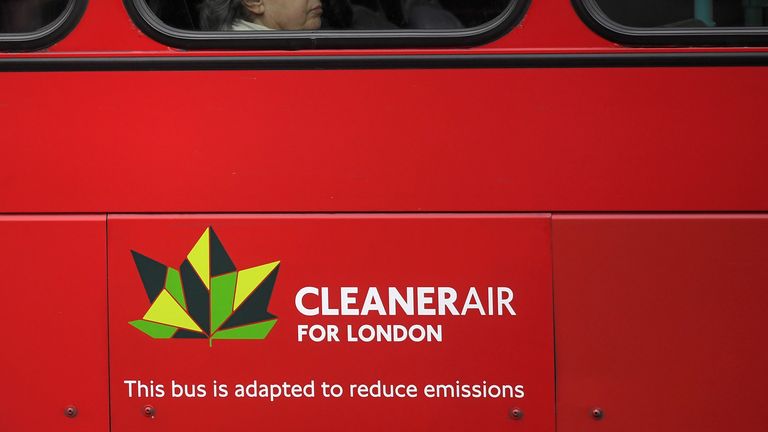
The Ultra Low Emission Zone (ULEZ) policy in London – described as “the world’s most stringent” – resulted in only small improvements in air quality soon after it was implemented, new research has found.
The ULEZ was introduced by Mayor of London Sadiq Khan in 2019 and expanded in October this year, charging drivers £12.50 a day if they travelled in vehicles which didn’t meet particular emission standards – but its effectiveness is now being called into question.
Similar policies have been introduced in other British cities, including Bath, Birmingham and Glasgow, with several others having plans to implement clear air zones, and the new research could impact how those policies are developed.
A study into the impact of London’s ULEZ has found it was marginal in the weeks after it was implemented, according to researchers at Imperial College London (ICL), but other policies mean the air quality in the city has been improving considerably all the same.
The researchers used air quality data to measure changes in pollution in the twelve-week period from 25 February 2019, before the ULEZ was introduced, to 20 May 2019, after it had been implemented.
They found that, compared to the overall decrease in London’s air pollution levels, the ULEZ caused only small improvements in air quality in the weeks following its start date: an average reduction of less than 3% for nitrogen dioxide concentrations, and insignificant effects on ozone and particulate matter (PM2.5) concentrations.
They also found the biggest pollution changes all took place before the ULEZ came into effect in 2019.
In response to the study, a spokesperson for the Mayor of London said the study was “very misleading”.
Shirley Rodrigues, deputy mayor for environment and energy, said: “This study is very misleading and its findings have been queried by experts within the university. Imperial College’s world-leading Environmental Research Group have been clear that the ULEZ has had a significant and positive effect on London’s air pollution.
“The ULEZ has already helped cut toxic roadside nitrogen dioxide pollution by nearly half and led to reductions that are five times greater than the national average. But pollution isn’t just a central London problem, which is why the expansion of ULEZ will benefit Londoners across the whole of the city and is a crucial step in London’s green recovery from this pandemic.”
Between 2016 and 2020, the number of people in London living in areas with illegally high levels of nitrogen dioxide fell by 94% as policies such as the Low Emission Zone, Low Emission Bus Zones, and bus and taxi electrification took effect.
Air pollution causes thousands of deaths a year in the UK due to conditions such as stroke, heart disease, lung cancer and both acute and chronic respiratory diseases, with an estimated 40,000 occurring in 2019 – 4,000 of which were in Greater London.
Dr Marc Stettler, from Imperial’s Department of Civil and Environmental Engineering and Centre for Transport Studies, said: “Our research suggests that a ULEZ on its own is not an effective strategy to improve air quality.
“The case of London shows us that it works best when combined with a broader set of policies that reduce emissions across sectors like bus and taxi retrofitting, support for active and public transport, and other levies on polluting vehicles.”
He continued: “Cities considering air pollution policies should not expect ULEZs alone to fix the issue as they contribute only marginally to cleaner air. This is especially the case for pollutants that might originate elsewhere and be blown by winds into the city, such as particulate matter and ozone.”







More Stories
5 Reasons Why Everyone Should Look Forward to Save Earth Mission’s Takeoff Event
Save Earth Mission’s Takeoff Event Countdown Starts: Get Ready to Witness History
The Save Earth Mission: A Global Movement Towards a Sustainable Future